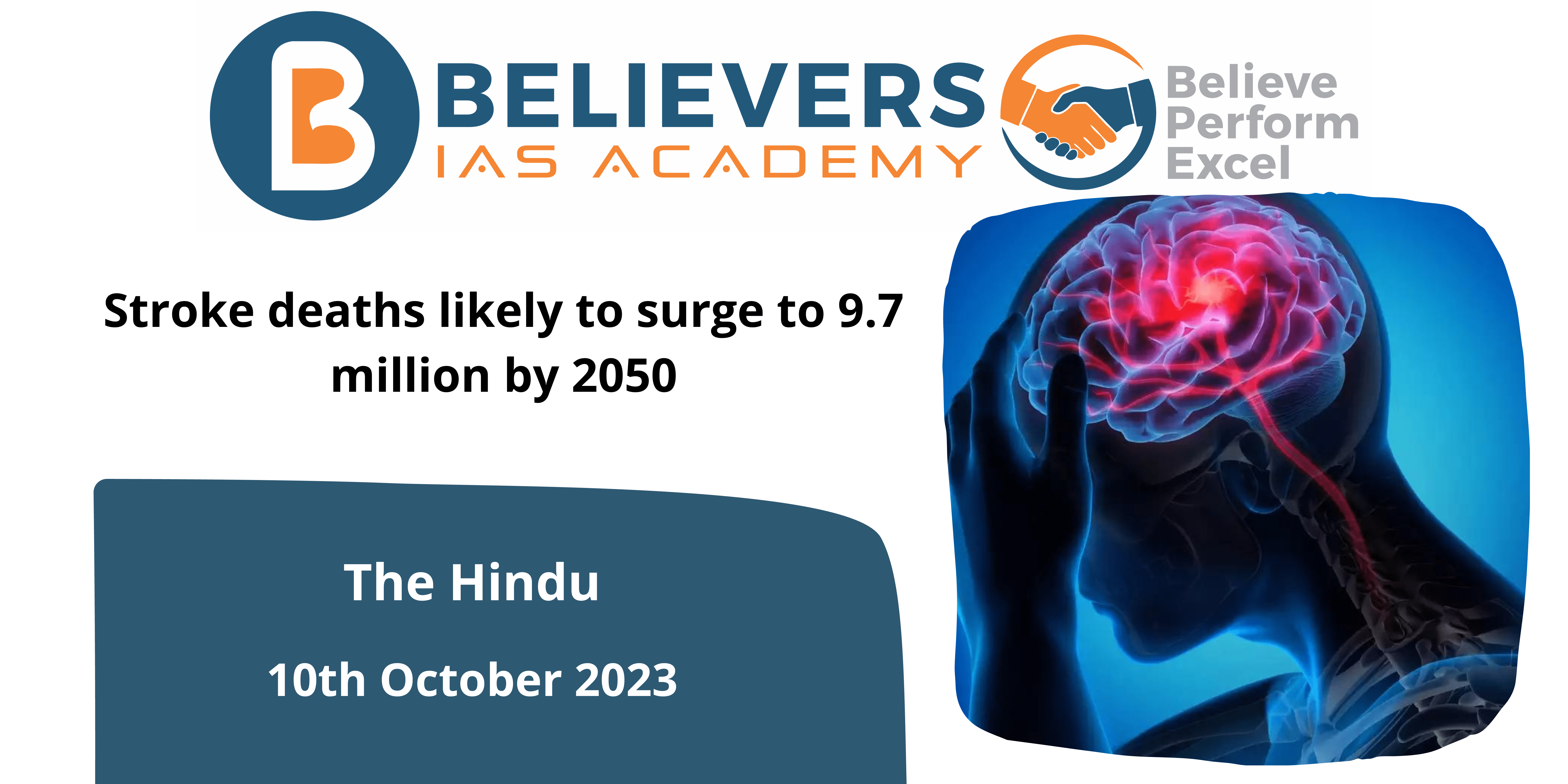Stroke deaths likely to surge to 9.7 million by 2050
Context
According to a paper released on Monday in the Lancet Neurology journal, stroke, a disorder that is largely treatable and preventive, might cause roughly 10 million annual fatalities by the year 2050, predominantly impacting low- and middle-income countries (LMICs).
What is a stroke condition?
When there is a blockage in the blood supply to the brain or an unexpected increase in brain haemorrhage, a stroke may happen. There are two distinct stroke kinds:
- An ischemic stroke is one when there is a blockage of blood flow to the brain. Blood cannot supply the brain with nutrition and oxygen. Brain cells start to die within minutes of being deprived of oxygen and nutrition.
- Hemorrhagic strokes are caused by abrupt bleeding in the brain and are the most common type of stroke. Blood leakage causes pressure on brain cells, which harms them.
What are the common risk factors associated with Strokes?
- High blood pressure (hypertension)
- Smoking
- Diabetes
- High cholesterol levels
- Obesity
- Physical inactivity
- Excessive alcohol consumption
- Family history of stroke
- Age (risk increases with age)
- Certain medical conditions, such as atrial fibrillation (an irregular heart rhythm)
What are the symptoms associated with strokes?
- Numbness or weakness in the face, arm, or leg (typically on one side of the body)
- Trouble speaking or understanding speech
- Confusion
- Severe headache
- Trouble with vision in one or both eyes
- Dizziness, loss of balance, or lack of coordination
What does the report in Lancet Neurology journal tell us about strokes?
- Stroke Prevalence: Strokes are a largely treated and preventable disorder, yet by 2050 they could cause up to 10 million fatalities annually. The 6.6 million stroke-related fatalities reported in 2020 represent a significant increase from this worrying forecast.
- Impact on Low- and Middle-Income Countries (LMICs): The report underlines that LMICs are projected to bear a disproportionate share of the burden of stroke-related mortality. Stroke fatalities are predicted to increase from 86% in 2020 to 91% in LMICs by 2050.
What are the recommendations to combat the looming strokes?
- Creating Cost-Effective Surveillance Systems: To support efforts in stroke prevention and treatment, detailed epidemiological data on stroke must be collected through cost-effective surveillance systems.
- Raising Public Awareness: Using digital and mobile technologies for education and awareness initiatives to increase public awareness and encourage healthier lives.
- Strokes Care Services: Setting the planning and development of acute stroke care services as a top priority. Building capacity, educating people, giving them with tools they need, assuring them access to reasonably priced medications, and assigning enough funds are all examples of this.
Conclusion
The article emphasizes the need to address stroke as a global health concern by implementing preventive actions. The prevention of stroke-related mortality and the cost of this condition on healthcare systems and communities around the world can be significantly reduced by putting the suggested solutions into practice, especially in low- and middle-income nations.




